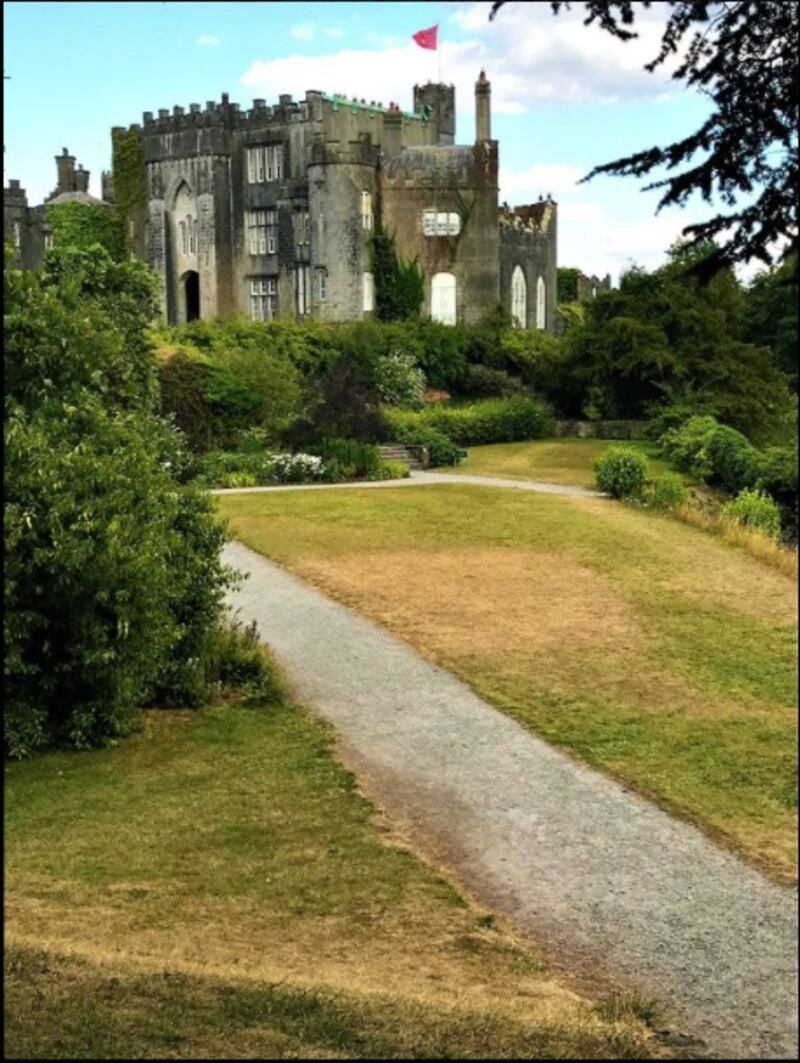Archaeologists and historians have been turning up unusual finds across the country thanks to the heatwave, including what's believed to be the childhood home of St Oliver Plunkett and paths used by astronomers more than 100 years ago at Birr Castle.
President of the Birr's Historical Society Brian Kennedy said a number of "important" finds were pointed out to him by the 7th Earl of Rosse, Brendan Parsons, during a recent visit to the castle and gardens.
These included the astronomers’ paths – exposed on the scorched lawns – and impressions of the Ely O’Carroll “Black Castle” .
“The Black Castle would have been more or less the headquarters of the O’Carrolls,” explained Mr Kennedy. He said most of the old castle was long gone. “Where the main hall of the castle is today was originally the gate.”
The Black Castle was held by the O’Carrolls until the 1580s when it was sold to the Ormond Butlers. The castle fell into ruin before it was granted to the Parsons family by James I in 1620.
While it was known the old castle had been located on the grounds of the existing castle, the exact location has only now been revealed thanks to the weather.
“We are just glad to know where it is and hopefully in years to come some exploration can take place,” said Mr Kennedy.
He added he was thrilled to see the old pathways emerging from the grass. “In the grounds of the castle the paths that the astronomers took from the main gate and from what is now the science centre, we can see the actual paths.”
Loughcrew Estate
Birr Castle is synonymous with science and discovery. In 1845, the 3rd Earl of Rosse built the biggest telescope in the world, the Leviathan, which held the title for 75 years. Today Birr Castle is home to Ireland’s I-LOFAR telescope under a €150 million European astronomical network.

In Co Meath, the National Monuments Service has been contacted about the discovery of the possible childhood home of St Oliver Plunkett.
The outline of a house, containing three big rooms and four smaller rooms, with a pathway leading to the church in the grounds of Loughcrew Estate, near Oldcastle, became apparent during the prolonged spell of dry weather recently.
St Oliver Plunkett grew up on the estate but the precise location of the house was unclear, although it is mentioned in the civil survey of 1612.
The possibility of the site being his ancestral home has excited owner of the estate Emily Naper, a direct descendant of the saint who was canonised in 1975 and whose head is on display in St Peter’s Church in Drogheda.
Crop marks
“I’m not an archaeologist by any means but it’s a fair assumption to make that this is the house, especially as the path seems to be linked straight to the church,” she said.
“You can make out three big rooms of the same size and then four smaller rooms at the back which could have been bedrooms. It would be lovely to have the site examined, dated and verified.”
St Oliver was born at Loughcrew in 1625 and ordained a priest in 1654 and later became archbishop of Armagh.
In recent weeks, a number of crop marks at sites across the Boyne Valley have been revealed due to the dry weather.
The National Monuments Service said it was informed last Tuesday of a report of a cropmark indicating a building at Loughcrew and has asked those who reported the discovery to complete a monument report form.
Last month, a henge was discovered near Newgrange, Co Meath which has now been added to the record of national monuments. The circular monument, which became visible against the parched landscape, is believed to have been built 500 years after Newgrange, which dates from 3,000 BC.










